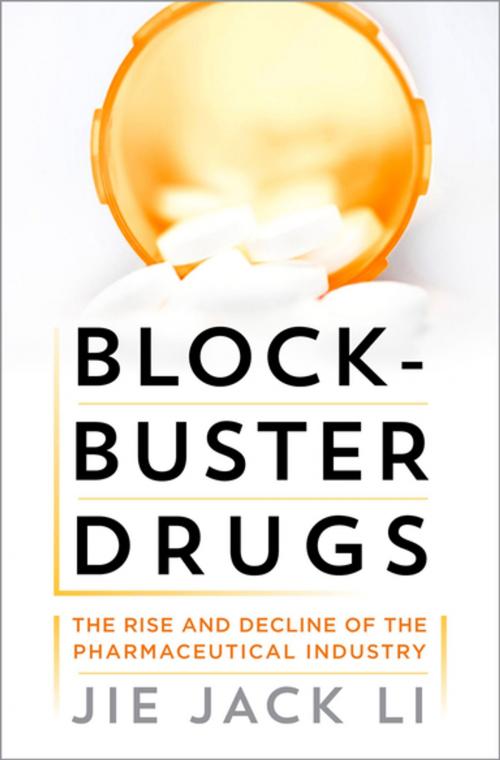Blockbuster Drugs
The Rise and Decline of the Pharmaceutical Industry
Nonfiction, Health & Well Being, Medical, Medical Science, Pharmacology| Author: | Jie Jack Li | ISBN: | 9780199911929 |
| Publisher: | Oxford University Press | Publication: | December 2, 2013 |
| Imprint: | Oxford University Press | Language: | English |
| Author: | Jie Jack Li |
| ISBN: | 9780199911929 |
| Publisher: | Oxford University Press |
| Publication: | December 2, 2013 |
| Imprint: | Oxford University Press |
| Language: | English |
For the world's largest prescription drug manufacturers, the last few years have been a harrowing time. Recently, Pfizer's Lipitor, GlaxoSmithKline's Advair, AstraZeneca's Seroquel, and Sanofi-Aventis and Bristol-Myers Squibb's Plavix all came off patent in the crucial U.S. market. This so-called "patent cliff" meant hundreds of billions of dollars in lost revenue and has pharmaceutical developers scrambling to create new drugs and litigating to extend current patent protections. Having spent most of his career in drug discovery in "big pharma," Dr. Li now delivers an insider's account of how the drug industry ascended to its plateau and explores the nature of the turmoil it faces in the coming years. He begins with a survey of the landscape before "blockbuster drugs," and proceeds to describe how those drugs were discovered and subsequently became integral to the business models of large pharmaceutical companies. For example, in early 1980s, Tagamet, the first "blockbuster drug," transformed a minor Philadelphia-based drug maker named SmithKline & French into the world's ninth-largest pharmaceutical company in terms of sales. The project that delivered Tagamet was nearly terminated several times because research efforts begun in 1964 produced no apparent results within the first eleven years. Similar stories accompany the discovery and development of now-ubiquitous prescription drugs, among them Claritin, Prilosec, Nexium, Plavix, and Ambien. These stories, and the facets of the pharmaceutical industry that they reveal, can teach us valuable lessons and reveal many crucial aspects about the future landscape of drug discovery. As always, Dr. Li writes in a readable style and intersperses fascinating stories of scientific discovery with engaging human drama.
For the world's largest prescription drug manufacturers, the last few years have been a harrowing time. Recently, Pfizer's Lipitor, GlaxoSmithKline's Advair, AstraZeneca's Seroquel, and Sanofi-Aventis and Bristol-Myers Squibb's Plavix all came off patent in the crucial U.S. market. This so-called "patent cliff" meant hundreds of billions of dollars in lost revenue and has pharmaceutical developers scrambling to create new drugs and litigating to extend current patent protections. Having spent most of his career in drug discovery in "big pharma," Dr. Li now delivers an insider's account of how the drug industry ascended to its plateau and explores the nature of the turmoil it faces in the coming years. He begins with a survey of the landscape before "blockbuster drugs," and proceeds to describe how those drugs were discovered and subsequently became integral to the business models of large pharmaceutical companies. For example, in early 1980s, Tagamet, the first "blockbuster drug," transformed a minor Philadelphia-based drug maker named SmithKline & French into the world's ninth-largest pharmaceutical company in terms of sales. The project that delivered Tagamet was nearly terminated several times because research efforts begun in 1964 produced no apparent results within the first eleven years. Similar stories accompany the discovery and development of now-ubiquitous prescription drugs, among them Claritin, Prilosec, Nexium, Plavix, and Ambien. These stories, and the facets of the pharmaceutical industry that they reveal, can teach us valuable lessons and reveal many crucial aspects about the future landscape of drug discovery. As always, Dr. Li writes in a readable style and intersperses fascinating stories of scientific discovery with engaging human drama.















